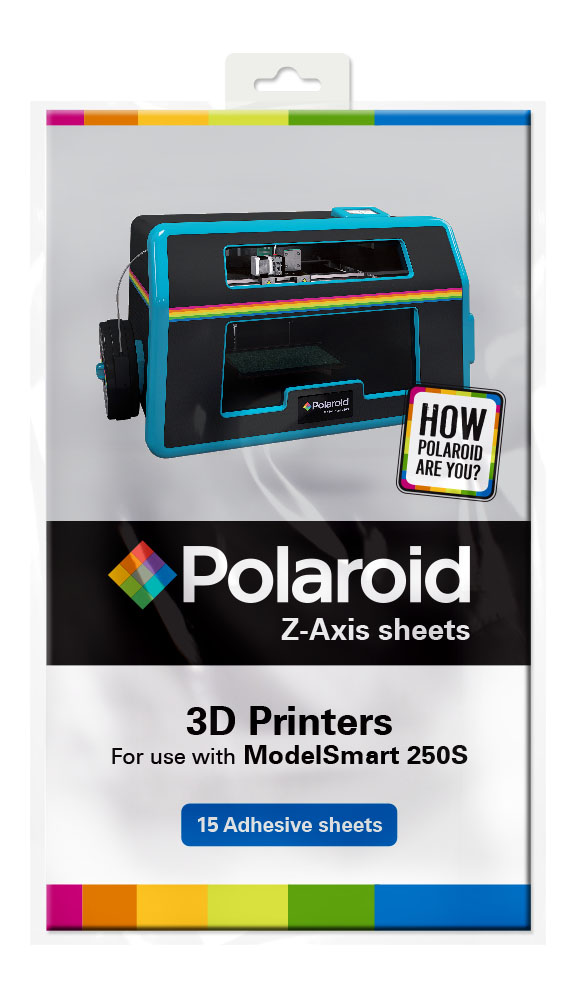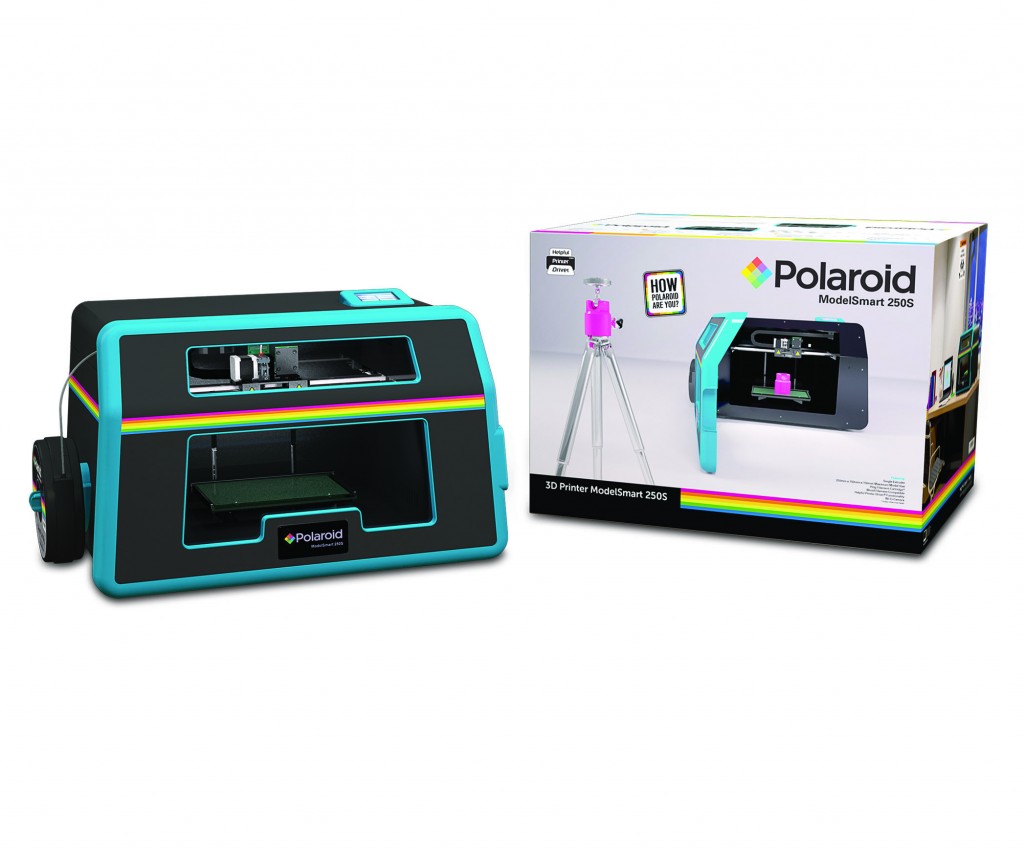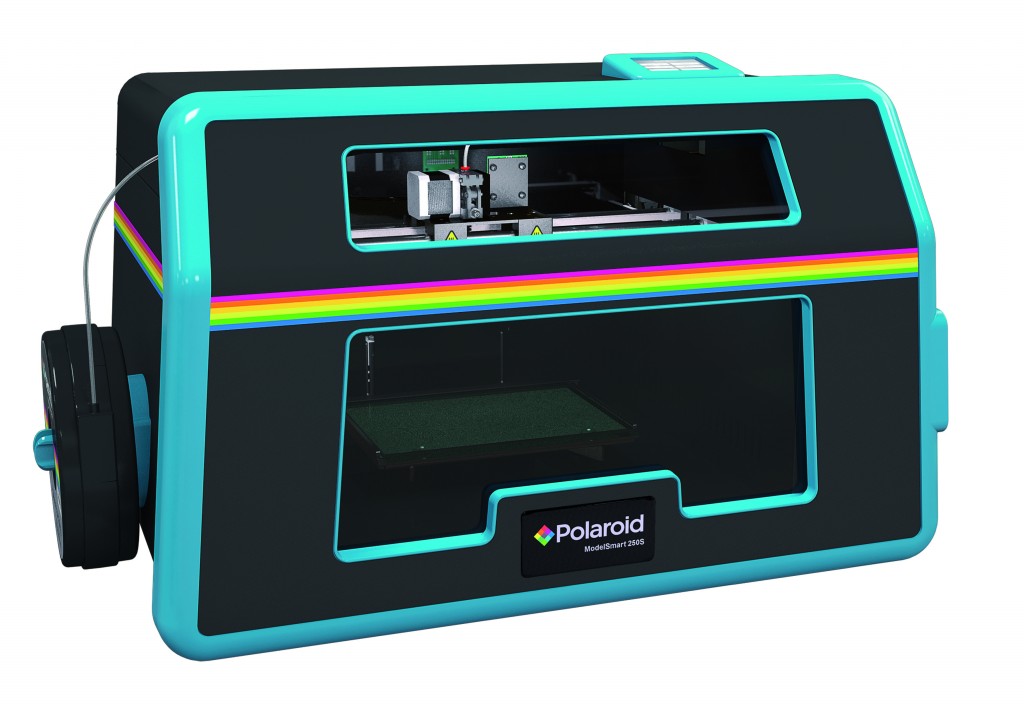Remember Polaroids? At one point during the 80’s, they were today’s equivalent of Instagram, making photography an immediate, instinctive, and fun thing that everyone could do. Now, the company behind that iconic technology is looking at 3D printing with the same interest. Considering that it was the first photocamera maker with an integrated photo printer, this fact makes perfect sense for consumers. It was not by chance that the Polaroid 3D printer was unveiled today at CES in Las Vegas.
To bring the Polaroid-branded 3D printer to market, the company researched the model that best fit its standard and settled for the ST3Di 3D printer, manufactured and distributed by Environmental Business Products (EBP). This is Europe’s largest and longest-established collector and remanufacturer of inkjet cartridges with over 20-years experience and credibility in the print industry.
In 2014, EBP diversified into the 3D printing market, introducing the technology to their European customers. Under the initial three-year collaboration with Polaroid, EBP will be the sole manufacturer of the Polaroid 3D printer and consumables range and will have exclusivity in 15 European markets.
“Throughout our history, the Polaroid brand has been associated with creating innovative products, but we’re also committed to making innovative technologies accessible to everyone,” said Scott W. Hardy, President and CEO of Polaroid. “Just as the first Polaroid Land camera enabled people to watch a picture instantly develop, our relationship with EBP will allow us to bring the magic of creating an object right before your eyes to consumers across Europe.”
The launch product, which will feature Polaroid’s distinctively colorful livery, will be the Polaroid ModelSmart 250S 3D printer. This will make Polaroid the first global household name to enter the 3D printing market, adding more substance to the idea that a consumer market for 3D printing is going to be established.
The Polaroid 3D printer will come with a consumables range (also featuring Polaroid’s distinctive colors) and will be available through reseller and retail outlets across Europe from early 2016. The 3D printer is going to offer several features that will try to address consumer needs. It will come with a WiFi-enabled camera and offer accurate auto calibration. Its proprietary Helpful Printer Driver software will make consumables re-ordering an easy and convenient experience.
However, the system is bound to make the use of proprietary filaments much more intuitive while offering a range of nine PLA colors (Pink, Blue, Green, Yellow, Orange, Lime, Black, White, Silver) and Wood. Another handy feature to simplify the user experience is the bi-directional smartchip mechanism on filament cartridges, which identifies filament levels and ensures the correct material is used. To ensure that 3D printing is simplified, the ModelSmart 250 will also come with an innovative, transparent, double-sided adhesive Z-Axis sheets to be applied to the print bed for effortless application, adhesion and model removal.

3DPI exclusively caught up with Amy Horn, Category Director, Environmental Business Products, who is at CES to follow the launch. Ms Horn was able to tell us a bit more about Polaroid’s and EBP’s strategy to leverage the 3D printer market’s continuing year-on-year growth. “With Gartner predicting 2.3 million units being sold by 2018,” Ms Horn explains, “Polaroid wants to continue to build upon successes of late in being early adopters of game-changing innovations. After almost two years of searching Polaroid found a partner in EBP, who have shared values and interests as well as an ambition to become household names in this extremely exciting new opportunity. The Polaroid brand is a trusted household name – she adds – associated with creating cutting-edge technologies and making innovative products accessible to everyone. In partnership with EBP we will help 3D printing become part of everyone’s everyday life.”
As is the case for many other companies, the main “consumer” target for Polaroid and EBP is that of the educational sector, because, Ms Horn explains, “it has proven to be key and awareness is critical to gain traction.” She continues, “We have a clearly defined marketing strategy, an exceptional product offer, compelling and unique selling points and a great brand in Polaroid. We believe we are extremely well equipped to penetrate the mass-market. This, plus our long-standing print industry background we are already nimble, versatile, trusted and good listeners.”
As awareness grows and the installed machine base increases, EBP aims to continue to develop innovations, respond to the market’s needs, and innovate through a programme of on-going, new unique selling points and differentiators. The first activity to promote the new 3D printers is the ‘How Polaroid Are You?’ pixel challenge, which is based on the diamond shaped Polaroid & Pixel Design logo, where six key Polaroid colours have been 3D printed to produce six shapes that combine to form a 3D interpretation of the iconic Polaroid & Pixel logo.
The pixel challenge is designed to evoke emotions at both ends of the spectrum from frustration, exasperation, utter despair, irritation, failure and dismissal right through to total euphoria, elation, celebration, accomplishment, triumph and victory, once the puzzle has been completed and the participant becomes ‘So Polaroid’! The idea behind it is to establish a connection to the innovative, creative, problem-solving world of possibilities by using a Polaroid 3D printer.
The consumer 3D printing market may continue to experience extreme ups and downs in the years to come, as any new technology might (especially one as potentially disruptive); however, the active participation of global brands like Polaroid, along with continued innovation, ensures that this market is here to stay, and grow.






